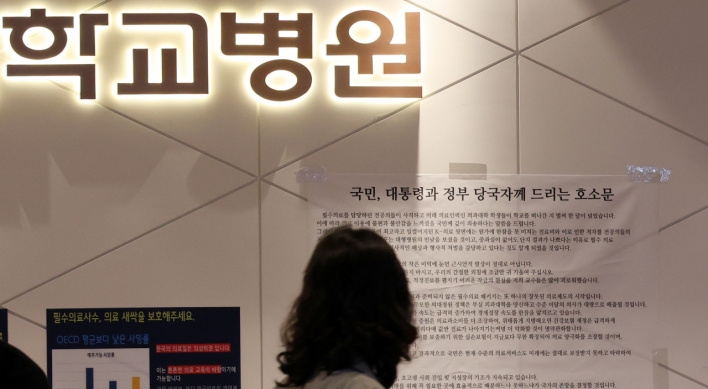One of the intractable problems that the incumbent government has failed to address is the construction of an interim storage facility for spent nuclear fuel rods.
The project should have already started in light of the fact that the temporary at-reactor spent fuel pools, which currently store all fuel rods discharged from the nation’s 22 nuclear reactors, are nearly full.
But the current administration did not bother to tackle the urgent problem throughout its term. All it did was to launch an advisory group consisting of 23 eminent nuclear experts in Korea.
The group, dubbed the “Spent Fuel Policy Forum,” has recently come up with a policy recommendation: The government should build an interim, away-from-reactor spent fuel storage facility by 2024 at the latest.
According to the group, it takes 10 years to complete such a facility. This means construction should start in 2014. But this is already too late, given that the spent fuel pools are forecast to fill up by 2016.
The experts group hence advised the government to make maximum use of the spent fuel pools until the interim storage facility is completed.
There is little the current administration can do about the recommendation because its term is nearing an end. All it can do is to pass the document to the next government.
Given that the project is already behind the schedule, the next government is required to start it without delay. But this is easier said than done. It is a safe bet that the next administration will face enormous difficulties getting the job done.
We still vividly remember the ordeals that the previous governments underwent to build a permanent underground repository for intermediate- and low-level nuclear waste, such as protective gloves worn at nuclear power plants.
It took some 20 years to select the site of the facility due to the “not-in-my-backyard” syndrome among residents of the candidate locations. To win approval from residents, the government had to promise massive investment plans and generous compensation packages.
Given that spent fuel emits far higher levels of radiation than the wastes to be stored in the repository in Gyeongju on the eastern coast, it could be more difficult for the next government to choose a site for the planned interim storage facility.
Yet the challenge is unavoidable. As long as Korea generates electricity using atomic power, spent fuel will continue to be discharged from reactors. The nation needs a safe facility to store it. The next government needs to fix a construction roadmap as early as possible and should do its best to sell it to the public.
The project should have already started in light of the fact that the temporary at-reactor spent fuel pools, which currently store all fuel rods discharged from the nation’s 22 nuclear reactors, are nearly full.
But the current administration did not bother to tackle the urgent problem throughout its term. All it did was to launch an advisory group consisting of 23 eminent nuclear experts in Korea.
The group, dubbed the “Spent Fuel Policy Forum,” has recently come up with a policy recommendation: The government should build an interim, away-from-reactor spent fuel storage facility by 2024 at the latest.
According to the group, it takes 10 years to complete such a facility. This means construction should start in 2014. But this is already too late, given that the spent fuel pools are forecast to fill up by 2016.
The experts group hence advised the government to make maximum use of the spent fuel pools until the interim storage facility is completed.
There is little the current administration can do about the recommendation because its term is nearing an end. All it can do is to pass the document to the next government.
Given that the project is already behind the schedule, the next government is required to start it without delay. But this is easier said than done. It is a safe bet that the next administration will face enormous difficulties getting the job done.
We still vividly remember the ordeals that the previous governments underwent to build a permanent underground repository for intermediate- and low-level nuclear waste, such as protective gloves worn at nuclear power plants.
It took some 20 years to select the site of the facility due to the “not-in-my-backyard” syndrome among residents of the candidate locations. To win approval from residents, the government had to promise massive investment plans and generous compensation packages.
Given that spent fuel emits far higher levels of radiation than the wastes to be stored in the repository in Gyeongju on the eastern coast, it could be more difficult for the next government to choose a site for the planned interim storage facility.
Yet the challenge is unavoidable. As long as Korea generates electricity using atomic power, spent fuel will continue to be discharged from reactors. The nation needs a safe facility to store it. The next government needs to fix a construction roadmap as early as possible and should do its best to sell it to the public.



![[Herald Interview] 'Amid aging population, Korea to invite more young professionals from overseas'](http://res.heraldm.com/phpwas/restmb_idxmake.php?idx=644&simg=/content/image/2024/04/24/20240424050844_0.jpg&u=20240424200058)














